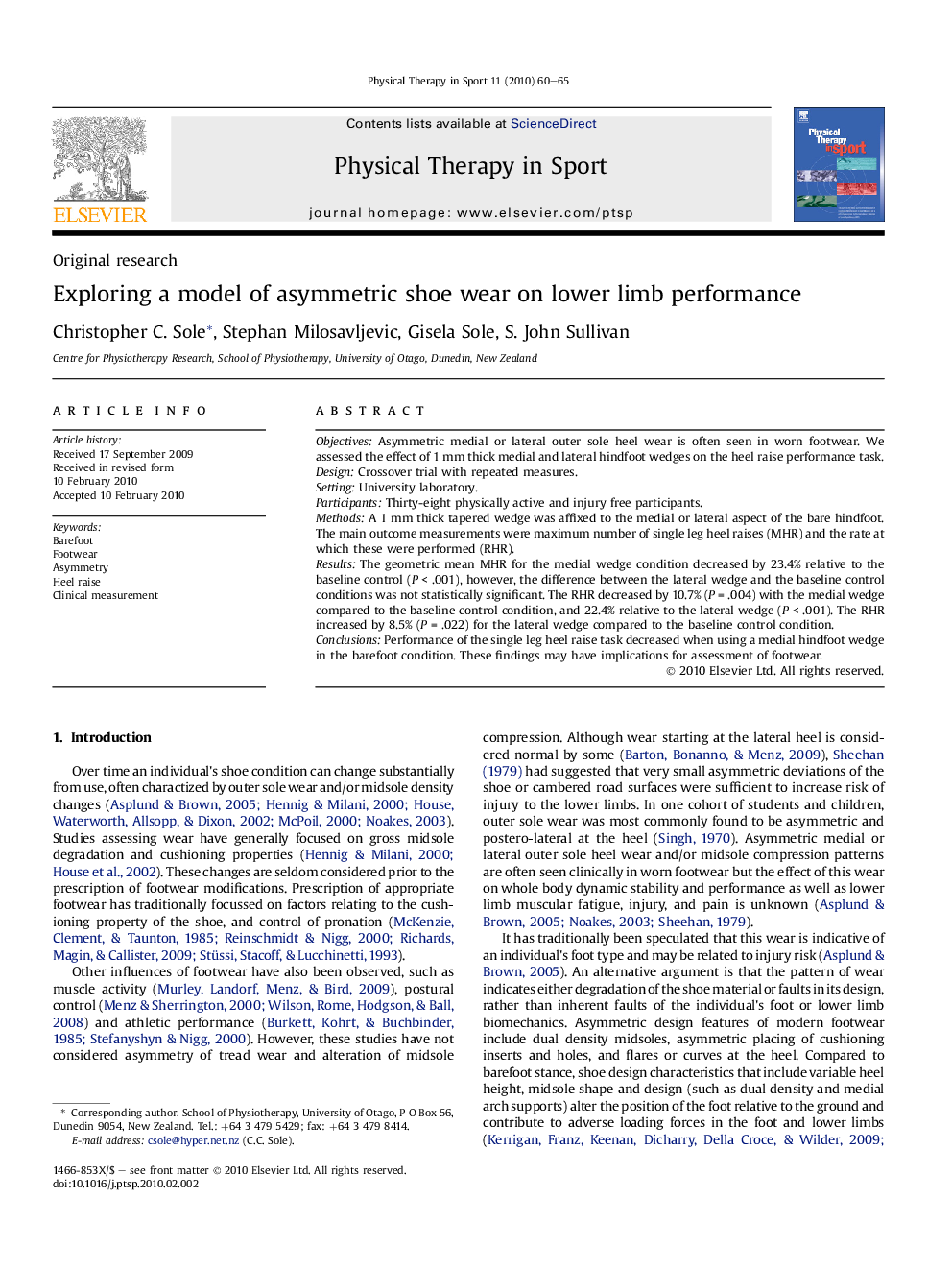| Article ID | Journal | Published Year | Pages | File Type |
|---|---|---|---|---|
| 2704439 | Physical Therapy in Sport | 2010 | 6 Pages |
ObjectivesAsymmetric medial or lateral outer sole heel wear is often seen in worn footwear. We assessed the effect of 1 mm thick medial and lateral hindfoot wedges on the heel raise performance task.DesignCrossover trial with repeated measures.SettingUniversity laboratory.ParticipantsThirty-eight physically active and injury free participants.MethodsA 1 mm thick tapered wedge was affixed to the medial or lateral aspect of the bare hindfoot. The main outcome measurements were maximum number of single leg heel raises (MHR) and the rate at which these were performed (RHR).ResultsThe geometric mean MHR for the medial wedge condition decreased by 23.4% relative to the baseline control (P < .001), however, the difference between the lateral wedge and the baseline control conditions was not statistically significant. The RHR decreased by 10.7% (P = .004) with the medial wedge compared to the baseline control condition, and 22.4% relative to the lateral wedge (P < .001). The RHR increased by 8.5% (P = .022) for the lateral wedge compared to the baseline control condition.ConclusionsPerformance of the single leg heel raise task decreased when using a medial hindfoot wedge in the barefoot condition. These findings may have implications for assessment of footwear.
